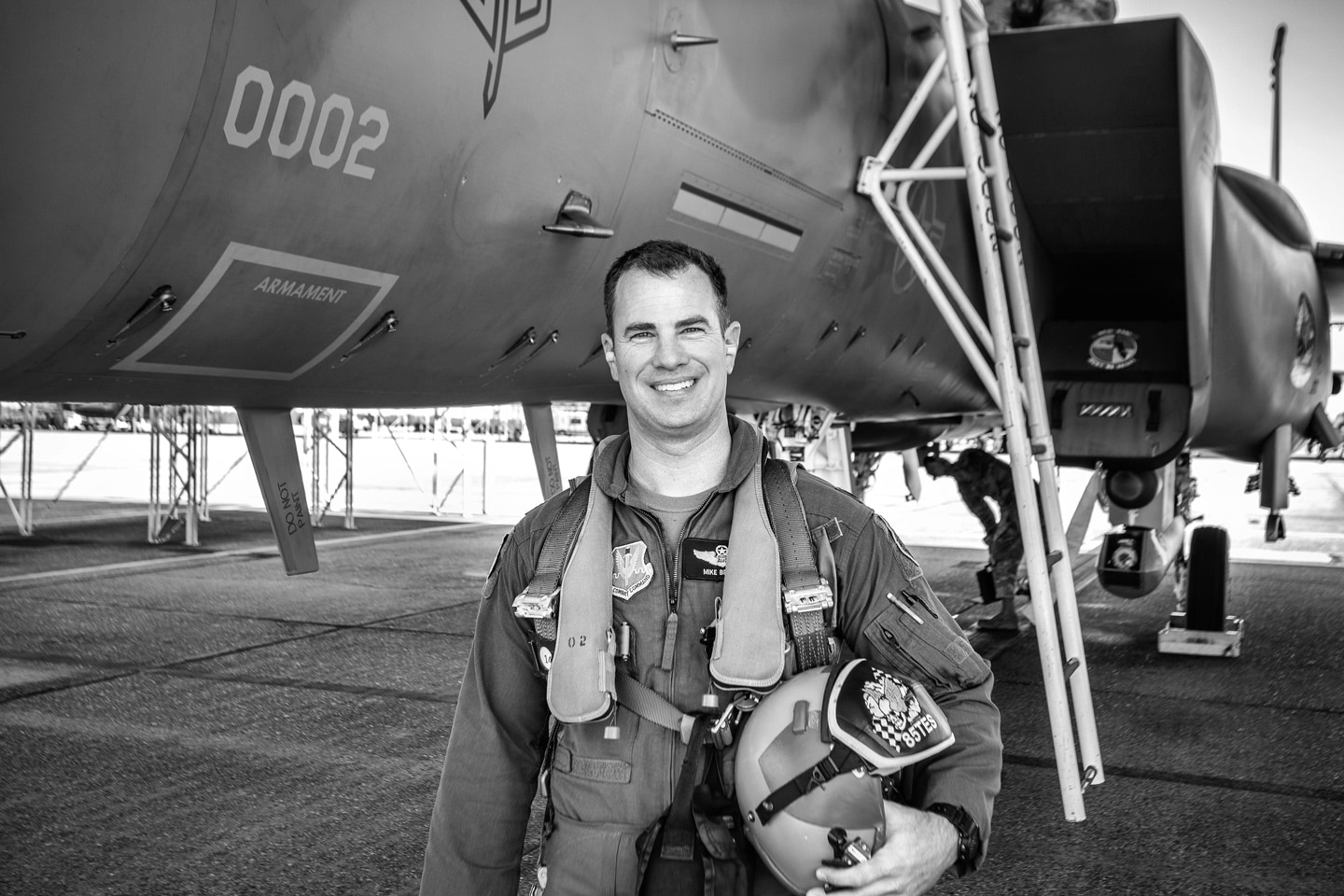Mike is an airpower advocate and veteran with 25 years of service in both the Marine Corps and Air Force. He completed five combat deployments totaling 250 combat missions in the F-15E, F-18F, CH-46, and CH-53. Mike’s eclectic experience with assignments in the Pentagon, Congress, DARPA, operational test, and Silicon Valley drew him to defense technology and innovation, but his operational roots keep him grounded where his heart is—with the warfighter.
As I approached the end of a broad military career, I referred to it as a pivot—not a retirement—in hopes I could find a way to continue pushing towards the future of defense, albeit in a different capacity.
I’ve been fortunate to cram several lifetimes of knowledge and adventure into a military career, doing amazing things with amazing people. And I selfishly wanted to find a way to continue doing so. Specifically, I was looking for three things:
1) GO BIG: build a better, safer future for America…
2) GO FAR: in a truly disruptive way…
3) GO TOGETHER: with a high-caliber team that can pull it off.
As a career tactician and airpower advocate who enjoys history, strategy, and technology, I first wanted to theorize what that future might encompass. To paraphrase Wayne Gretzky, I was interested in skating to where the puck is going to be, not where it has been. Today’s U.S. military airpower was built on the invention of the microchip—for a force designed around sensors, speed, and stealth. What will tomorrow’s force be built upon?
My conclusion: tomorrow’s air forces will be built around high-power computing—advanced designs, optimized networking, digital engineering, and AI.
Of those, AI has the most potential to be the gamechanger for airpower that the 21st century demands. And of the various applications of AI (logistics, predictive maintenance, intelligence forecasting, etc.), the most captivating to me is the one that fighter pilots will interact and integrate with the most: AI for Maneuver.
AI for Maneuver has the promise to break the paradigm by delivering both quality and quantity: capabilities that don’t just augment human performance, but also scale human performance.
How long does it take to develop a fighter pilot with 10 years of experience? 10 years.
How long does it take to develop that same 10-year experienced AI behavior? About 10 days.
But the real value is what happens next. Once developed, that AI can be replicated at ease across an entire fleet of fighters and drones. With a vision of the future in place, the final part of my three-piece puzzle was finding a team that shares this vision and can deliver on it—and that’s how I ended up at Shield AI.
As the Technical Director of Aircraft Programs within the company’s large segment product management group, my mission is to help build AI for Air Dominance—and get it to the warfighter ASAP.
My role is to take the technology that Shield AI is building and help integrate it into future-sounding capabilities like AI-assisted maneuvering for manned fighters, machine speed maneuvering for unmanned fighter/strike aircraft, and networked collaborative autonomy for heterogeneous swarming.
Collectively, these all feed into what I view as the mecca of AI for maneuver: Crewed-Uncrewed Teaming. Picture two F-35 fighters, not in formation with each other, but far apart and each leading their own formation—surrounded by a half dozen drone teammates.
AI for maneuver is a gamechanger: It begets new concepts that reimagine the way current air superiority and global strike missions are executed.
I couldn’t be more excited to be in this new role, on a great new adventure, helping advance a cause I am deeply passionate about.
Is bringing AI for maneuver from concept to combat with a sense of urgency an ambitious and audacious undertaking? You bet—and I wouldn’t have it any other way. The warfighter deserves nothing less.
Fights on!
